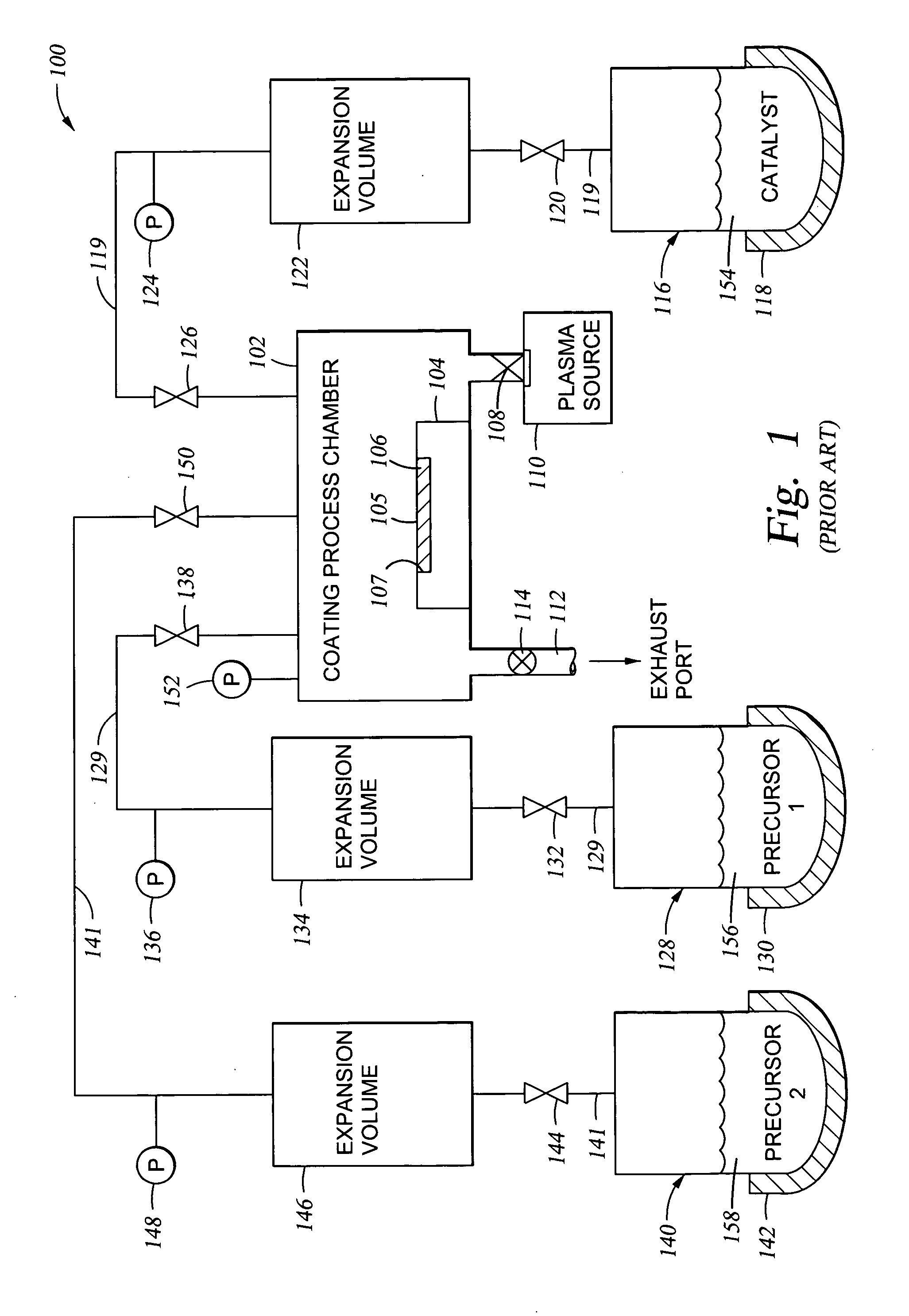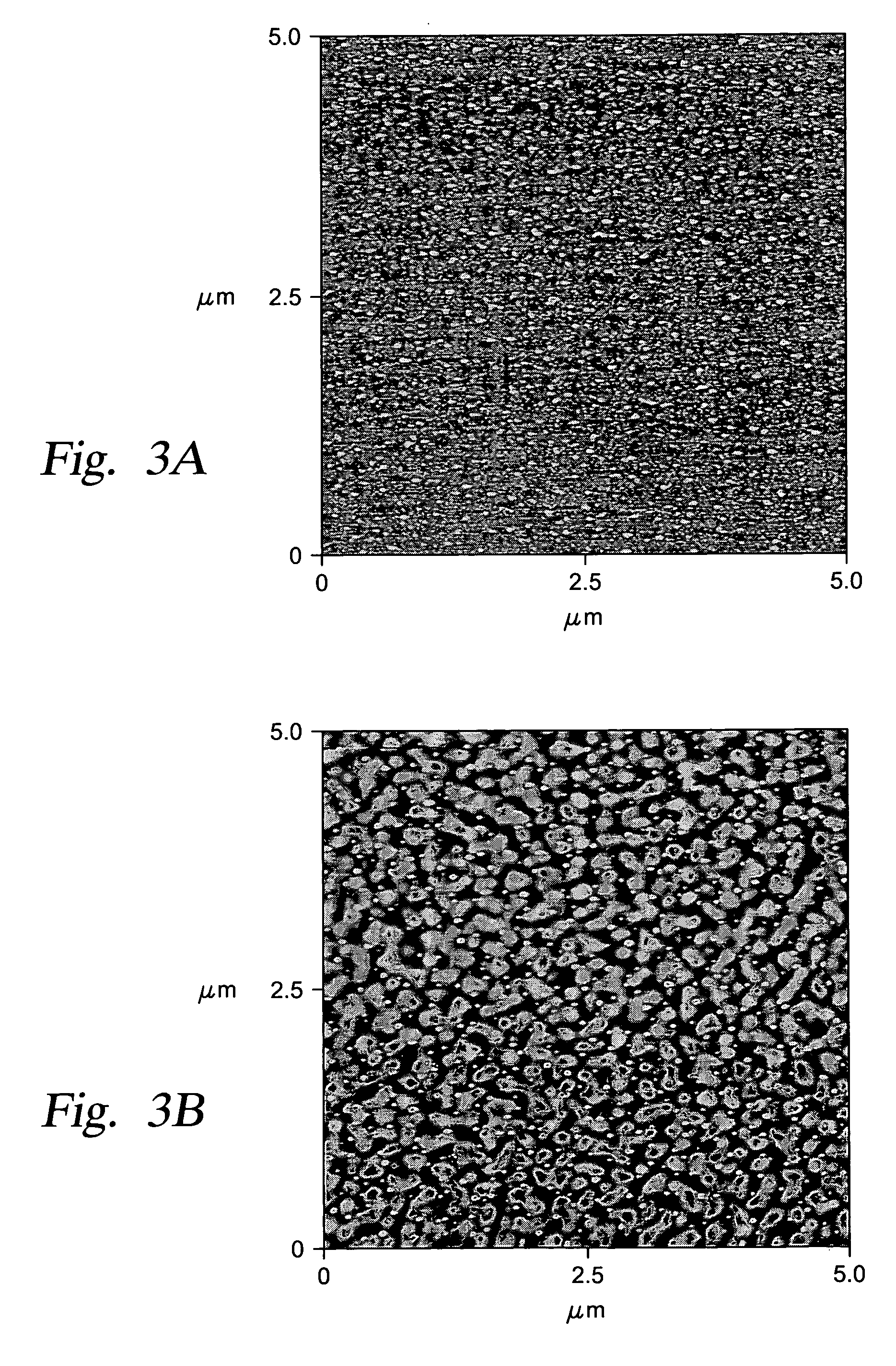Controlled deposition of silicon-containing coatings adhered by an oxide layer
a technology of oxide layer and controlled deposition, which is applied in the direction of vacuum evaporation coating, chemical vapor deposition coating, coating, etc., can solve the problems of limited film property control, limited device yield, and limited use of liquid phase processing,
- Summary
- Abstract
- Description
- Claims
- Application Information
AI Technical Summary
Benefits of technology
Problems solved by technology
Method used
Image
Examples
example one
[0068] Deposition of a Silicon Oxide Layer having a Controlled Number of OH Reactive Sites Available on the Oxide Layer Surface
[0069] A technique for adjusting the hydrophobicity / hydrophilicity of a substrate surface (so that the surface is converted from hydrophobic to hydrophilic or so that a hydrophilic surface is made more hydrophilic, for example) may also be viewed as adjusting the number of OH reactive sites available on the surface of the substrate. One such technique is to apply an oxide coating over the substrate surface while providing the desired concentration of OH reactive sites available on the oxide surface. A schematic 200 of the mechanism of oxide formation in shown in FIG. 2. In particular, a substrate 202 has OH groups 204 present on the substrate surface 203. A chlorosilane 208, such as the tetrachlorosilane shown, and water 206 are reacted with the OH groups 204, either simultaneously or in sequence, to produce the oxide layer 208 shown on surface 203 of subst...
example two
[0071] In the preferred embodiment discussed below, the silicon oxide coating was applied over a glass substrate. The glass substrate was treated with an oxygen plasma in the presence of residual moisture which was present in the process chamber (after pump down of the chamber to about 20 mTorr) to provide a clean surface (free from organic contaminants) and to provide the initial OH groups on the glass surface.
[0072] Various process conditions for the subsequent reaction of the OH groups on the glass surface with vaporous tetrachlorosilane and water are provided below in Table I, along with data related to the thickness and roughness of the oxide coating obtained and the contact angle (indicating hydrophobicity / hydrophilicity) obtained under the respective process conditions. A lower contact angle indicates increased hydrophilicity and an increase in the number of available OH groups on the silicon oxide surface.
TABLE IDeposition of a Silicon Oxide Layer of Varying Hydrophilicit...
example three
[0080] When the oxide-forming silane and the organo-silane which includes the functional moiety are deposited simultaneously (co-deposited), the reaction may be so rapid that the sequence of precursor addition to the process chamber becomes critical. For example, in a co-deposition process of SiCl4 / FOTS / H2O, if the FOTS is introduced first, it deposits on the glass substrate surface very rapidly in the form of islands, preventing the deposition of a homogeneous composite film. Examples of this are provided in Table III, below.
[0081] When the oxide-forming silane is applied to the substrate surface first, to form the oxide layer with a controlled density of potential OH reactive sites available on the surface, the subsequent reaction of the oxide surface with a FOTS precursor provides a uniform film without the presence of agglomerated islands of polymeric material, examples of this are provided in Table III below.
TABLE IIIDeposition of a Coating Upon a Silicon Substrate*Using Sil...
PUM
| Property | Measurement | Unit |
|---|---|---|
| Temperature | aaaaa | aaaaa |
| Temperature | aaaaa | aaaaa |
| Temperature | aaaaa | aaaaa |
Abstract
Description
Claims
Application Information
 Login to View More
Login to View More - R&D
- Intellectual Property
- Life Sciences
- Materials
- Tech Scout
- Unparalleled Data Quality
- Higher Quality Content
- 60% Fewer Hallucinations
Browse by: Latest US Patents, China's latest patents, Technical Efficacy Thesaurus, Application Domain, Technology Topic, Popular Technical Reports.
© 2025 PatSnap. All rights reserved.Legal|Privacy policy|Modern Slavery Act Transparency Statement|Sitemap|About US| Contact US: help@patsnap.com



